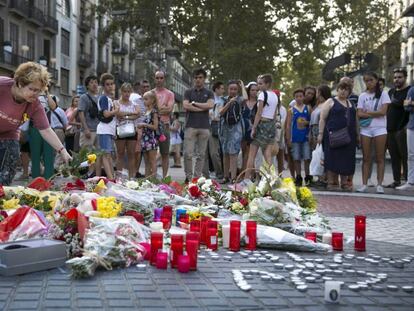La Rambla: Bearing the scars of jihad
On August 17 last year, 16 people were killed by Islamic extremists in Barcelona and Cambrils. Eight of the terrorists died. They belonged to a jihadist cell that appeared, from the outside, to be an ordinary crowd of youngsters hanging out together, a band of brothers who aroused no suspicion whatsoever. A year on, we review the events of that fateful day to seek out the reasons for their radicalization and the political and social response to the jihadist phenomenon
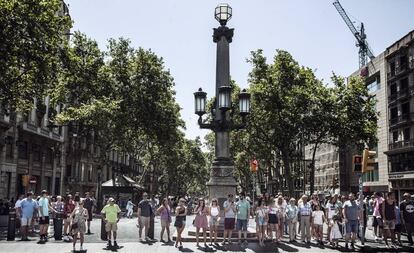
On any given day at 4.54pm, La Rambla is buzzing with people. The 500 meters that separate the Canaletas fountain from the mosaic by Joan Miró is a forest of heads talking a plethora of languages. Lining the avenue are cartoonists and street vendors; couples with children, ice cream stalls and flower kiosks; teenagers and seniors on excursions; Pakistanis wearing saris and Americans in shorts. Moving forward in this throng of people is nearly impossible.
That was the scene on August 17, 2017, when 22-year-old Younes Abouyaaqoub charged down La Rambla with his Fiat Talento van. His intention was to kill as many people as possible. He put his foot hard down on the accelerator and went on a murderous rampage that lasted 45 seconds.
Younes was born in Morocco, but he wasn’t an immigrant. From the age of four, he lived with his family in Ripoll, a town of 11,000 inhabitants at the foot of the Pyrenees, north of Girona. He was not known to be a devout Muslim. “He didn’t even know how to pray in Arabic,” says Alí Yassine, president of the Annour mosque. Nor was he marginalized. After finishing high school, he got a job as a solderer and bought a car and a motorbike. In his free time, he played sport and smoked pipes with his friends in the Plaza de la Sardana. He was considered to be a good guy.
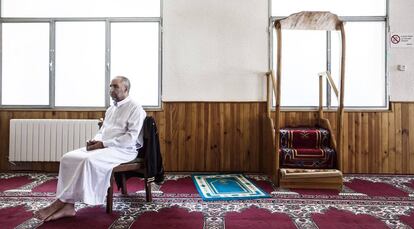
Nuria Perpinya, a social worker at Ripoll City Hall, knew him and the other 10 members of the cell well. She has spent a year asking herself how and why they became killers. “It’s a mystery that will stay with me for the rest of my life,” she says. “They were four pairs of brothers. Second generation. We thought that they now felt as though they belonged here, what with their Catalan, designer labels and jobs. And then all of a sudden we realize that integration is an emotional issue. A feeling.
“Most of the time, they didn’t feel as though they were from either Spain or Morocco. There they were called Europeans and here they were known as moros [or ‘Moors’ – in Spain, moro is typically used pejoratively to describe people from Morocco]. That produced a huge identity vacuum – one that someone could fill by offering them something to fight for. And in their case, it was the Imam Abdelbaki Es Satty who lured them. That is why we must make [Muslim youths] feel part of the community. It’s a long-term project. Miracles don’t exist. We have to rethink the system because it hasn’t worked.”
Concerning second-generation citizens, the Spanish Union of Islamic Communities offers a little-known fact: out of the two million Muslims who live in Spain, 42% have Spanish nationality and, out of those, 430,990 were born there. They are the children and grandchildren of North Africans, and are both Muslim and Spanish, like the jihadists from Ripoll.
“Previously, in the face of Islamic terrorism, we could say it had nothing to do with us, that they were not from here,” says political scientist Moussa Bourekba, the head of a study on the fallout from the attacks by think tank Cidob. “But now, the terrorist is homegrown. The members of the Ripoll cell grew up in Catalonia. And that forces us to focus on their biographies, to see what went wrong. We are confronted with a weakness in the system, not with dangerous moros.”
In less than a minute, Younes ran over everyone he could, including three children
Radicalization is the sum of different factors, of which religion is but one. There are elements of frustration and resentment, of injustice and exclusion; a socio-economic, political and cultural dimension. But up to what point is religion the catalyst? “I believe that there are young people who are drawn to violence, as happens in the school massacres in the United States or as was the case with Anders Breivik in Norway who killed 77,” explains Moussa Bourekba. “In Europe, Islam has become an excuse for those who want to use violence. Rather than a radicalization of Islam, there is an ‘islamization’ of radicalization that a youngster can use to justify his use of indiscriminate violence.”
Why did nobody suspect the young jihadists in Ripoll? A young and earnest officer from the counter-terrorism intelligence department of the National Police says: “This cell wasn’t on our radar. Ripoll is a small town with no ghettos. There were no previous cases. They were all brothers, friends and cousins so they communicated in absolute confidence. They were very young. They hadn’t caused problems at school. They didn’t communicate online. They weren’t flagged up. They didn’t drop into the mosque. They didn’t wear beards or traditional clothes – and then the Imam came along and gave them a push and they threw themselves into the void.”
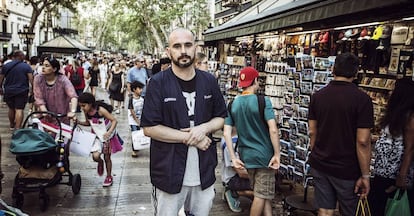
The older brothers – Younes, Mohamed Hichamy and Youssef Aalla – carried the younger ones along with them; two of those killed by police were minors. All underwent a rapid offline conversion. They met in secret 300 kilometers from Ripoll in Alcanar and Riudecanyes. “Our failure was that we did not identify them,” adds the officer. “No one told us that they were buying chemicals, that they had sold jewelry, that they had hired vans, that a group of Moroccan-looking squatters had moved into a shut-up chalet in Alcanar, Tarragona, and that a sickening smell of chemicals was coming from it.”
Younes was radicalized quickly and secretly. He and his colleagues were indoctrinated into the impenetrable Salafi sect Takfir wal-Hijra. Members of this sect are allowed to behave like infidels in order to avoid being detected. Once they are on track, it is impossible to stop them. The members of the Ripoll cell were hermetically sealed within a collective identity, based on family ties. If any one of them squealed or wished to leave, they would be betraying their own flesh and blood.

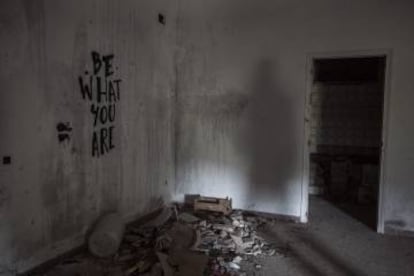
In a few months, Younes went from being a local soccer hero to a mass murderer with the blood of 15 people on his hands. In less than a minute, he ran over everyone he could, including three children, knowing full well what he was doing. He only stopped after the airbag in the van was released, which brought him to a halt by the Miró mosaic where his last three victims lay before him. “If the van hadn’t failed him, his killing spree would have continued until he reached the Colón monument,” says one of the officers of the Catalan regional police force, the Mossos d’Esquadra, while holding his rifle. “We saw the way the vehicle entered the boulevard. We ran after it but we couldn’t open fire given that kind of chaos. We took two minutes. When we got there, the terrorist was gone.”
Up by Hospital Street, Younes emerged from the van, which had been hired the previous day in Sabadell by his friend and neighbor Driss Oukabir, 27, who is now in Soto del Real prison. He looked left and right. He didn’t offer the usual cry of “Allahu akbar” – God is great. Instead, he ran off. “He expected to be gunned down and converted into a martyr. But nothing happened,” explains the head of counter-terrorism intelligence unit. “He walked calmly to the nearby Boquería market and hid among the stalls. Several hours later, he was killing again, this time stabbing to death Pau Pérez, 34, to steal his car. The fact that La Rambla didn’t have bollards was a grave security error. We had warned them about this,” he adds. However, Ada Colau, the mayor of Barcelona alleges that she had opted to reinforce security instead. Now, the zone has a number of meter-high bollards.
This is not terrorism as we know it, it goes one step further. The police can’t stop it National Police officer
On La Rambla, Younes left 14 dead and 140 injured – victims from 35 different countries. One of them was Pablo Abecasis, a 37-year-old Argentinian who worked in one of the kiosks. He saw everything. He has been off work for the past 10 months and still jumps at the slightest noise. “I went out to smoke,” he says. “I saw a white van enter by Canaletas. It seemed strange. It stopped by the metro. Then it sped up. People started to scream and run for safety. The van was coming straight for me. I tried to avoid it but it was making S shapes to make it impossible to escape. It threw me into the air. I flew several meters. I struck the windscreen with my head and arms and I think I broke it. I didn’t see his face. He drove over a woman who was next to me, destroying her. It took me head on: that’s why I wasn’t killed. The people who were hit from behind were done for. When it was all over and I was face down in a pool of blood, the only thing I was thinking was how strangely quiet La Rambla was; it was as though it were 5am. There was no one – no voices; you couldn’t even hear the birds.”
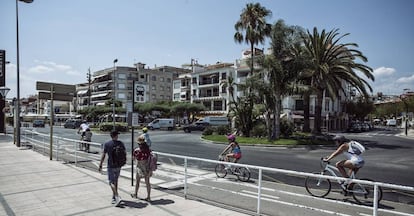
Joan Portals, head of the Mossos d’Esquadra in Barcelona, is another who will never forget the deadly silence that had fallen over La Rambla as he inspected the scene of the massacre at 5.15pm. His response was fast; he called on the services of all 17,000 regional police officers, placed patrols at strategic points across the city, tightened security on the city’s main infrastructure, and coordinated the emergency services, the local police and private security. He also organized a communication plan to relay news and information in real time via Twitter.
Soon teams of criminal detectives from the Mossos d’Esquadra had taken charge of the investigation. But there was also a discreet presence from members of the Civil Guard and National Police intelligence departments. The chief of the UCE-2 – the Civil Guard’s central unit against Islamic terrorism – flew to Barcelona from Madrid by helicopter. “With the advanced information, we began to realize that Younes was not a lone wolf,” he says. “We reconstructed the attack in our lab and we worked out what kind of action it was and what kind of terrorists were involved. What we didn’t do was connect it to an explosion that had happened the previous night in a chalet in Alcanar. That was a matter for the Mossos. They would not even let our explosive specialists access the place. It was pretty disgraceful.”
Barcelona had been preparing for such an attack for years. Since 2015, jihadist violence had been sweeping across Europe, from Paris and Brussels, to Nice and Berlin. Since the arrival of Daesh and the self-proclaimed Islamic State, 222 Spanish citizens – or people holding Spanish residency – had gone to Syria and Iraq to fight the Holy War. Many had returned. Another 255 Islamic extremists had died or been imprisoned. In jail, they had been strictly controlled by an intelligence system developed by the prison authorities and had undergone a deradicalization program. While there had been no jihadist attack in Spain for 13 years, the last being the Madrid train bombings in May 11, 2004, intelligence services believed Catalonia was at risk of an attack.
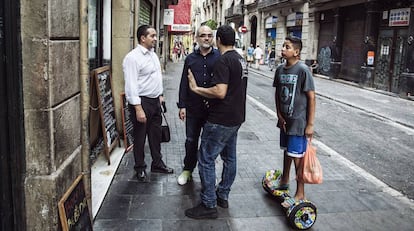
Given Barcelona has the highest density of Muslims in the country, 80 Salafi mosques and a long history of police operations associated with extremism, the Catalan capital was an obvious target. Moreover, the organizers of the Twin Tower attacks in New York had met in Tarragona, which was fast becoming known as a sanctuary for Islamists. Investigators Fernando Reinares and Carola García-Calvo from the Elcano Institute confirm that between 2013 and 2017 alone there were as many as 33 police operations related to Islamic extremism, with 65 arrests – the last of which was in Mataró on August 1.
Since June 2015, the terrorist threat level had wavered between four and five, according to Citco analysts. The risk was high, something that the ECE-2 head of the Civil Guard confirms. “Up to then, we had been lucky,” he says. “There was tension but calm. The threat is measured according to three criteria: the terrorists’ intention, the terrorists’ capacity and the probability that they will act. All of this came together on August 17. What surprised us was the scale of what they were planning. They had concocted huge amounts of TATP explosive [also known as the “mother of Satan”] than we had ever seen before: more than 200 kilograms.
“They were planning to put it inside the three vans they had hired the day before. It was to be a multiple attack, using different means. And on iconic spots [such as the Camp Nou and the Sagrada Familia] and also on police quarters. They knew that they would end up facing the Mossos. That was why they had hand grenades and at least one vest filled with explosives. They were going to go down fighting. We have averted a lot of threats over the years, but this time we couldn’t. The key was to respond. And we did. The cell was deactivated. Now we need to apply the lessons we learned.”
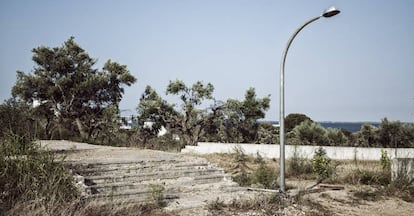
The coordination of information between the various security services has always been the Achilles heel of the fight against terrorism. In the wake of the Madrid train bombings, it became clear that not only had the authorities failed to detect the cell, they had failed to nail the Imam, a person with jihadist connections in both Spain and Europe who was radicalized in the Castellón jail where he was doing time for drug trafficking.
In the case of La Rambla, it is still not clear how a supposed warning from the CIA about an imminent attack failed to reach the ears of the appropriate authorities. Each police force blames the other. Nor is it known if the cell had connections with Daesh; if their trips to France, Belgium, Switzerland and Morocco were connected with the global structure of Daesh. Or if they were thinking of attacking Paris – something that appears to be confirmed.
Coordination between the different police forces began to function better on August 24, after High Court Judge Fernando Andreu intervened. All the cards were to be put on the table. The Mossos were given orders to work on the ground in Catalonia; the National Police was told to work with the Moroccan authorities and the Civil Guard with the French. It was a perfect plan, but it probably came too late. The heads of the terrorist cell were dead. “The least intelligent thing to do when it comes to gathering intelligence is to kill the bad guy,” says a police information official. “Because you are left without a direct account of how the attack was planned and carried out. And the Mossos killed six.”
The least intelligent thing to do when it comes to gathering intelligence is to kill the bad guy Police information official
One of the first decisions taken by Portals was to apply Operation Jaula to stop the terrorist on La Rambla from getting away – something that failed. Less than one hour after the attack, a coordination center was established in the Hard Rock Café in La Plaza de Cataluña and a center of operations was set up in an underground room belonging to the Interior Department on Sant Joan Street. Josep Lluís Trapero, the former head of the Mossos d’Esquadra, who declined to comment for this article, took the reins. “August 17 had a political dimension that made me very uncomfortable and still does,” he has said previously. “And it meant a profound change in my life that I am still dealing with and that is still to come to an end.”
The attack didn’t go to plan. The terrorist hadn’t organized an attack on La Rambla. Everything went wrong the night before with the explosion at 11.17pm in a remote housing development between Tarragona and Castellón – the epicenter of Spanish jihadism. Two members of the cell were killed, including the Imam, Es Satty. A third, Mohamed Houli Chemial, 21, was seriously injured and is now being held in Alcalá Meco prison.


The house on Montecarlo Street, nine kilometers from Alcanar, is now a heap of rubble. An incongruous set of steps lead to the plot where the single-story building once stood. This is where Es Satty, 45, radicalized the youngsters. It was also the lab where 200 kilograms of TATP was produced – a white powder that dusted the floor of the house. In a small outhouse, there were more than a hundred gas canisters. Towards midnight on August 16, the chalet blew up, destroying the neighboring chalet, which belonged to an old French couple, who were fortunately not home that night. The couple does, however, claim that they always suspected their neighbors were up to no good. “We never saw any women or children,” they agree. “They were very discreet young men. They talked to us in French and there was always one on lookout on the roof. We thought they were mixed up in drugs, but we didn’t tell anyone.”
The Mossos did not give much importance to the explosion either, which they also assumed was drug related.
After the explosion in Alcanar and the death of the Muslim cleric, the terrorists were left to their own devices without explosives, weapons or experience. And so, at 4.54pm, August 17, Younes struck La Rambla alone. At 1.03am, five of his colleagues – among them his brother Houssaine, 17, tried to carry out a similar attack on the seafront in Cambrils. Driving a black Audi, they rammed into a police patrol car before killing a tourist and injuring many more with knives. They were then killed by a uniformed officer and a plain-clothes policeman.
Four days later, at 4pm on August 21, Younes was shot dead by two Mossos d’Esquadra on a path between vineyards near Sant Sadurní. He was carrying a fake explosive belt and four knives. According to the Mossos, no one had helped him during the four days he had spent wandering the countryside. The cell had been eliminated. According to Eduard Sallent, from the Mossos’ intelligence services, “There is not much else to know. The investigation is not going to do a U-turn. The problem we are facing is not against terrorism but is a matter of prevention.”
Sixteen people died in the attacks besides the eight terrorists. Three terrorists are still in prison and two are on bail. On August 26, 2017 there was a huge demonstration in Barcelona against terrorism that was tainted by political overtones. But then the independence movement in Catalonia entered its most intense period, culminating on October 1 with a referendum on secession from Spain. In this climate of confrontation, the attacks would be forgotten. No one was interested.
“There was an attempt to put it quickly behind us,” says analyst and anthropologist Cidob Jordi Moreras. “To avoid showing up the holes in the much-lauded migrant-integration system in Catalonia. After 30 years, it’s time to review it. Because there are things that don’t work. Suddenly, Ripoll has become the blot on the landscape of integration in Catalonia. If it had happened somewhere with ghettos and social problems such as Hospitalet, Manresa or Badalona, they would have insisted on just socio-cultural integration. But Ripoll is not on the jihadist map. The police didn’t know anything was going on. So now on the one hand, we have a problem that is an integration issue and on the other hand, one that reveals the extreme fragility and lack of representation of the Muslim community in Spain. There are Imams who earn €150 and no one knows where they have come from. With this lack of control, many have opted to forget what happened.”
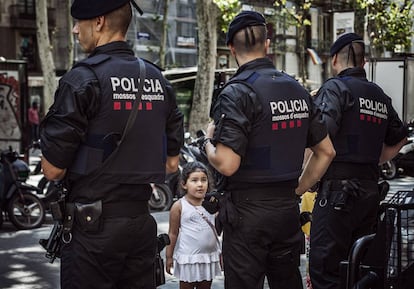
According to the spokesman from the National Police’s counter-terrorism squad, “this is not terrorism as we know it, it goes one step further. The police can’t stop it. Not everyone who is radicalized has recognizable traits. It’s a mixed bag. Militants and madmen; people who are radicalized online and off; some who have come back from Syria and others who have never left their hometown. Some have beards and djellabas and others smoke, drink and go to parties. The sad thing is that in Barcelona we can’t neutralize the threat as we have done in other times. Radicalization emits weak signals that can only be detected in the immediate vicinity and that we can’t see from where we are. It is beyond the police’s reach. It concerns society. It goes beyond investigation. There has to be a plan that includes society.”
The town of Ripoll has been the most eager to put the attacks behind it. It is a pleasant town with an air of Switzerland about it, surrounded by forests and mountains. There is no extreme poverty here and all the children study at the same local high school – Abat Oliba – whatever their backgrounds. This is where most of the cell studied. Two were still there when the attacks took place. The school’s director Paco Navarro prefers not to talk about them. It is just too painful for everyone concerned. They may have been terrorists, but they were also neighbors, friends and children. “We need time to reflect. How can we get these boys to have a sense of belonging when they are contemptuously defined as ‘second-generation immigrants?’ I have 750 students and I can’t find the answer. We have to focus on prevention because if prevention works, you don’t hear anything more about it. But if it doesn’t work, tragedy can ensue. And that’s what happened on August 17, 2017.”
English version by Heather Galloway.

